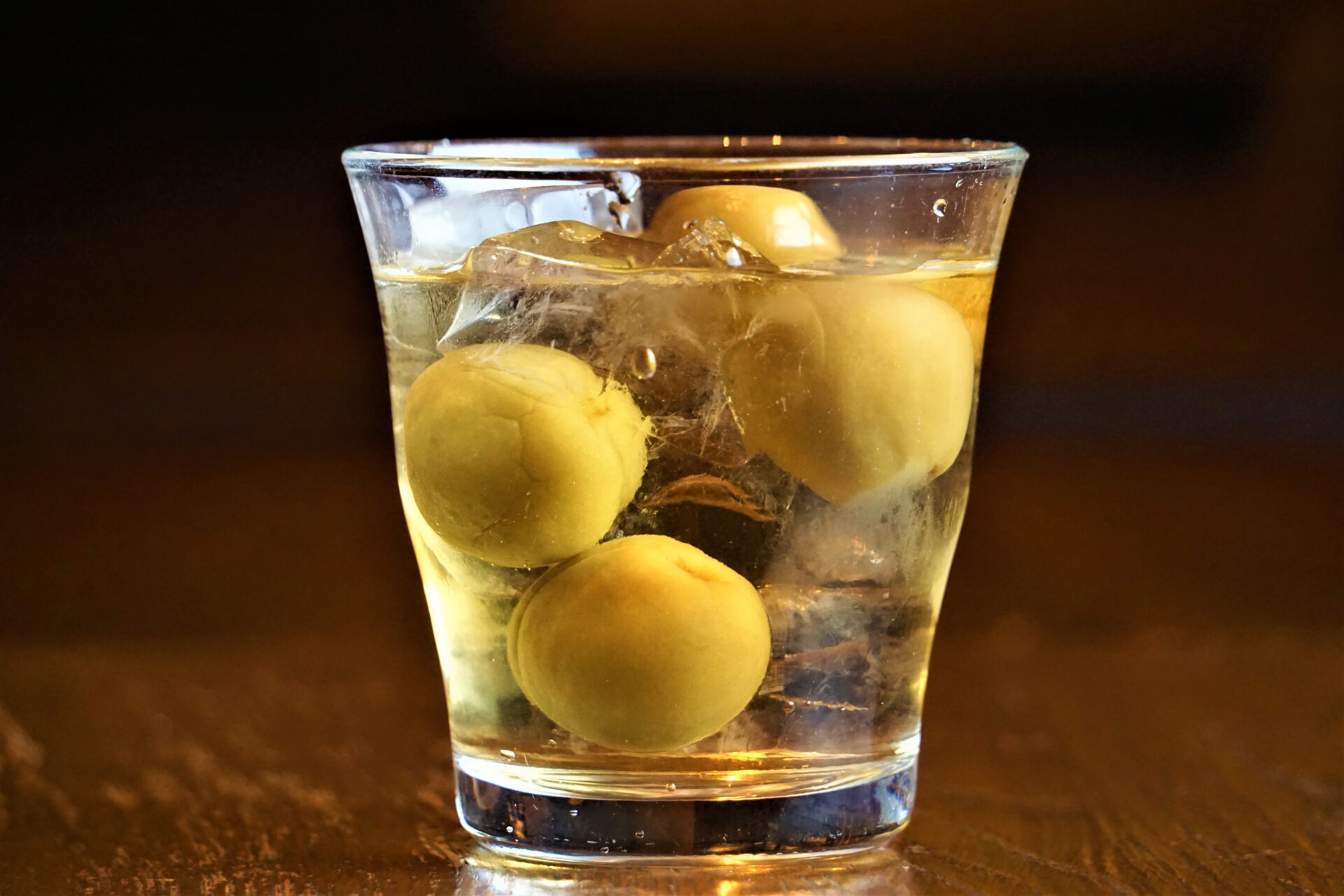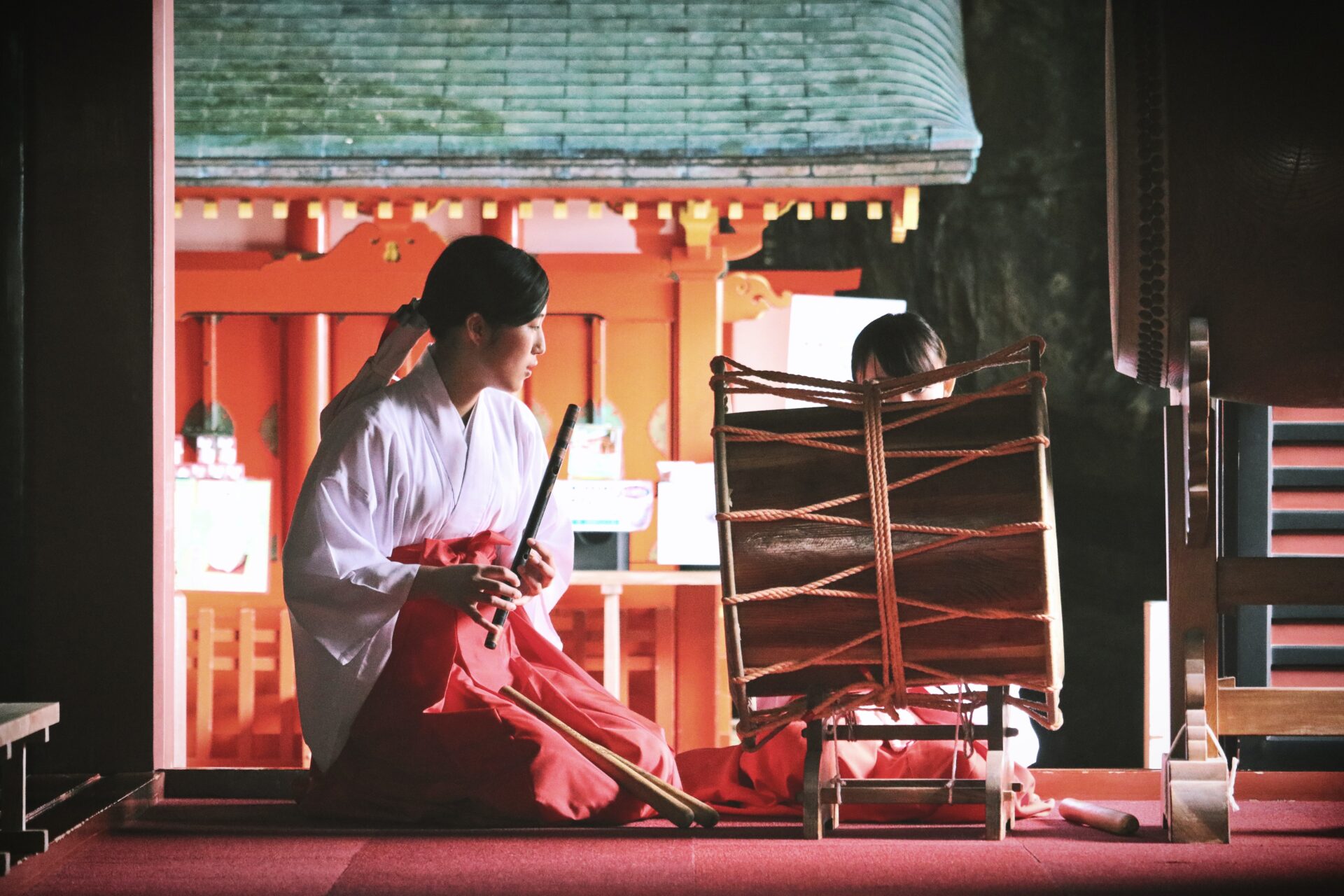Plum wine, known as umeshu (梅酒) in Japanese, is a beloved alcoholic beverage in Japan. It’s made from green ume plums, and the flavor is a great combination of sweet and slightly tangy. It is easy to drink even for those who don’t really like other types of alcoholic drinks such as nihonshu or beer which can have a bitter taste and typically also a higher content of alcohol. In recent years, plum wine has also gained popularity around the world as a healthy drink which helps people recover from exhaustion and brings a variety of other health benefits, too. When did they start making umeshu in Japan? And what is the best way to enjoy this tasty drink? Here is the ultimate guide to Japanese plum wine!
The History of Japanese Plum Wine
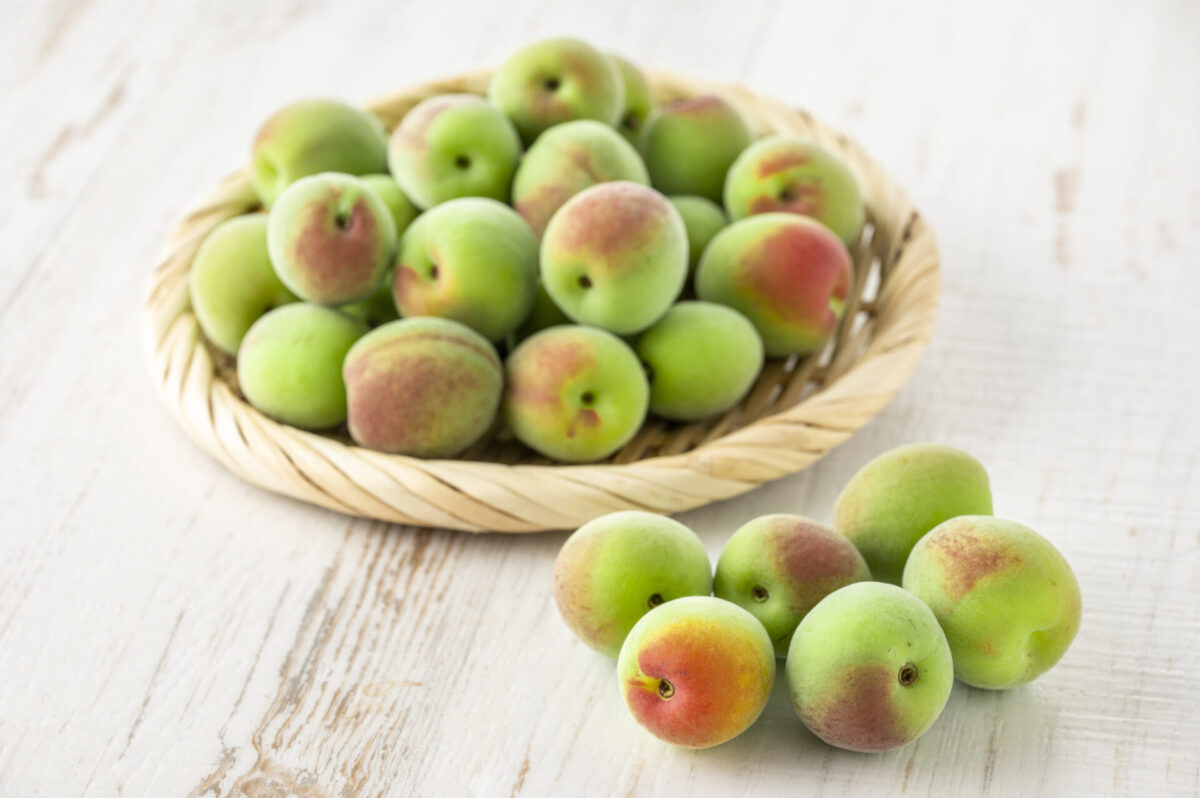
It is believed that the origin of Japanese plum wine dates back to the Edo Period (1603 – 1868). The oldest plum wine recipe can be found in an early book about Japanese cuisine written in the late 17th century. During that time, sugar, which is an essential ingredient in umeshu, was rare and very valuable. Therefore, plum wine was expensive and available only to wealthy people.
On the other hand, plums were widely grown and consumed across Japan as a healthy and affordable food at the time. People planted their own plum trees at home and enjoyed the fruits in a variety of ways. Some people also grew plums as a business and made profits by selling them. Umeboshi (梅干し), or pickled plums, is probably the most popular way to eat the ume plums even today. While plums used to make wine are young and still have a green color, umeboshi is made from ripe plums that have turned red. Today, it’s popular as an ingredient in rice balls or as a standard side dish for traditional Japanese meals as it pairs perfectly with white rice.
In 1959, CHOYA, the biggest plum wine manufacturer in Japan, started to produce and sell umeshu. At the time, it was strictly prohibited to make plum wine privately at home, but in 1962 the law was revised and it became legal to make and enjoy your own plum wine. As a result, consumption of alcoholic beverages in Japan started to increase along with the growing popularity of plum wine.
Today, there is a wide variety of plum wines available at supermarkets, convenience stores and izakaya bars across Japan. The slightly sweet, fruity taste of plum wine is particularly popular with those who don’t like strong alcoholic beverages such as nihonshu or shochu.
How to Enjoy Japanese Plum Wine
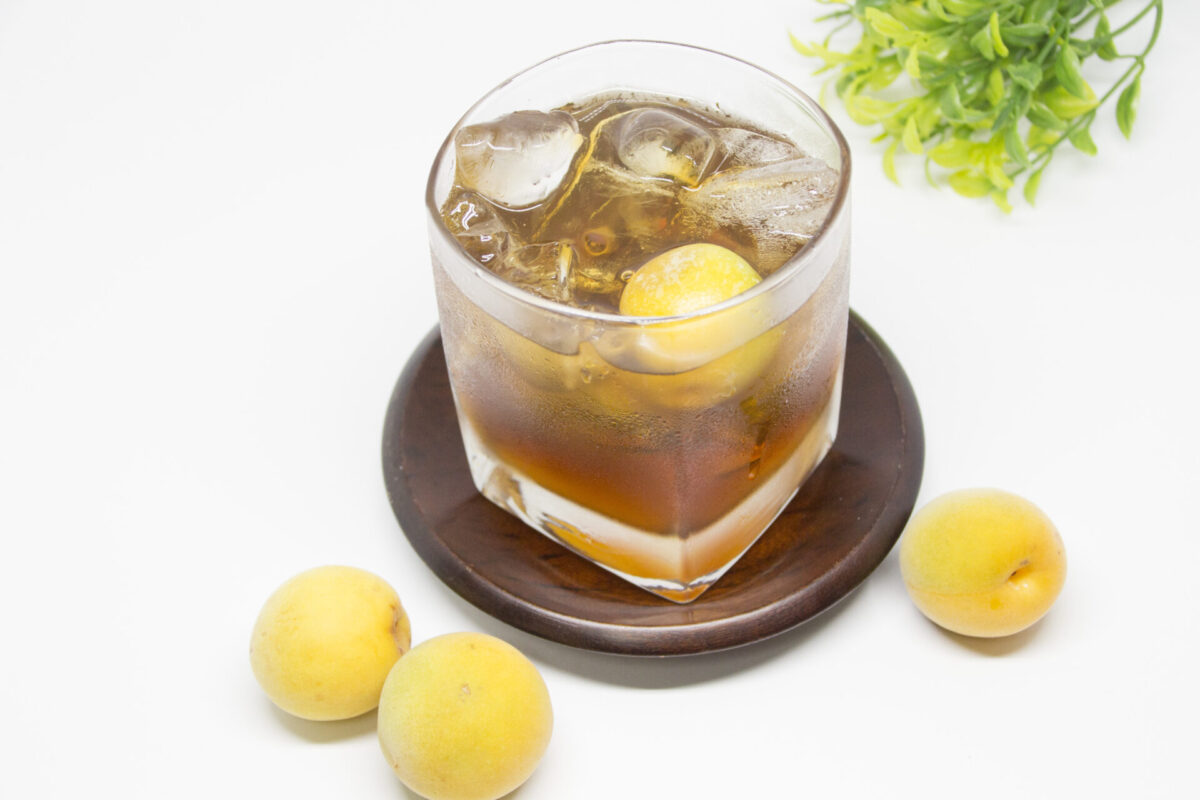
Plum wine is consumed in a variety of ways in Japan, so you can try different drinking styles and find your favorite way to enjoy it. Like other alcoholic beverages, canned plum wine is the most popular and affordable option and is widely available at supermarkets and convenience stores across Japan. You can also find umeshu that comes in a small, sealed glass cup with one or two green plum fruits inside it. They are visually beautiful and perfect for drinking at home!
At traditional Japanese restaurants, a small glass of plum wine is often served as an aperitif to increase appetite before meals. Plum wines are delicious not only when drunk straight, but also mixed with hot water, soda or on the rocks, offering a wide range of options to choose from depending on your mood and preference.
How Much Is Japanese Plum Wine?
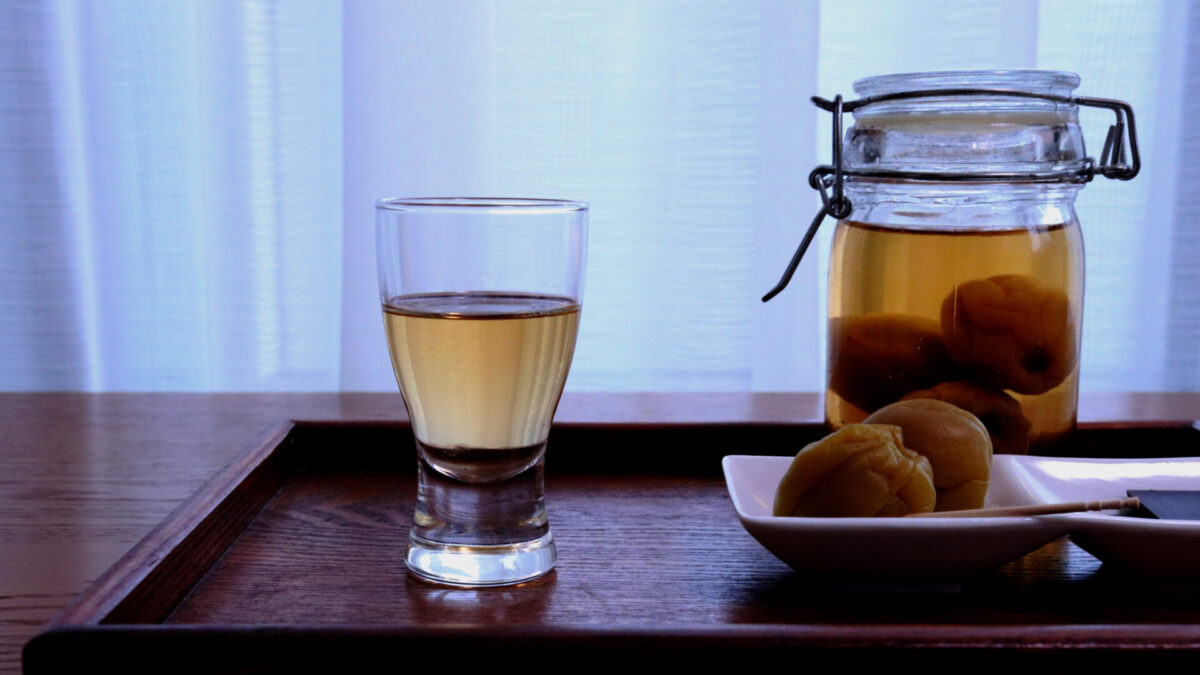
The price of Japanese plum wines varies greatly depending on the type of wine. The price of standard canned plum wines can be as little as 100-150 yen at supermarkets. If you buy them at convenience stores the price is usually a little higher. At izakaya bars and casual restaurants a glass of plum wine can typically be enjoyed for around 500 yen which is similar to other common alcoholic drinks such as beer.
Umeshigoto: Enjoy Making Delicious Japanese Plum Wine at Home!
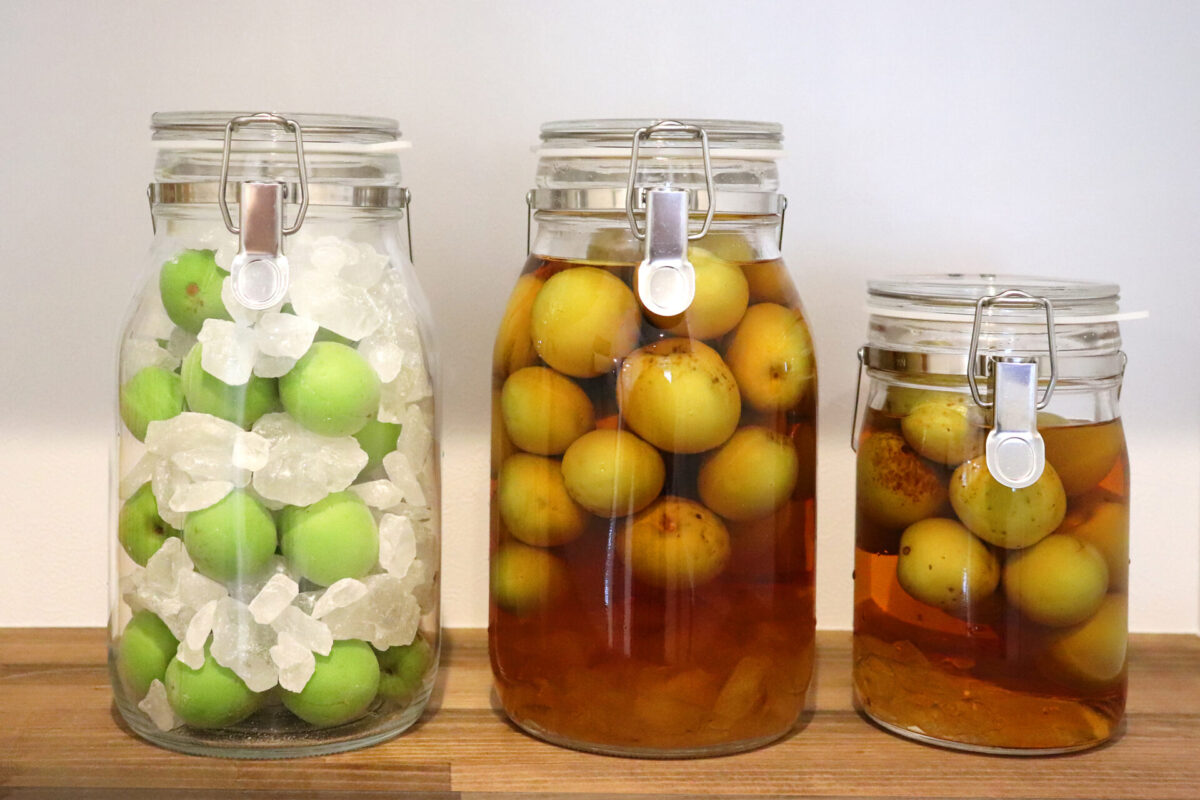
Some people also enjoy making plum wine at home. This is called umeshigoto (梅仕事), and people start working on their homemade wines sometime between mid-May and mid-June. During this season, young green plums are harvested and sold at supermarkets.
The recipe of homemade plum wine is very simple and easy to follow even for beginners. All you need to prepare are simple ingredients such as ume plums, water, rock sugar and alcoholic liquor such as shochu or whiskey with an alcohol content of more than 20%.
Here are the basic steps to make homemade plum wine:
1. Wash the plums carefully with water and wipe off the moisture.
2. When the surface is completely dry, remove the stems and place a layer of plums in a glass jar.
3. Cover the plums with a layer of rock sugar and repeat the process until you have filled the jar with layers of plums and rock sugar.
4. Pour liquor (clear liquor is most often used for Japanese plum wine) into the jar until it covers the plums completely.
5. Cover the jar with a lid and store it in a cool, dark place.
6. It generally takes about 3 months for the plum wine to become ready to drink. When the plum wine turns beautifully amber-colored, your homemade umeshu is ready to drink!
Popular Japanese Plum Wine Brands
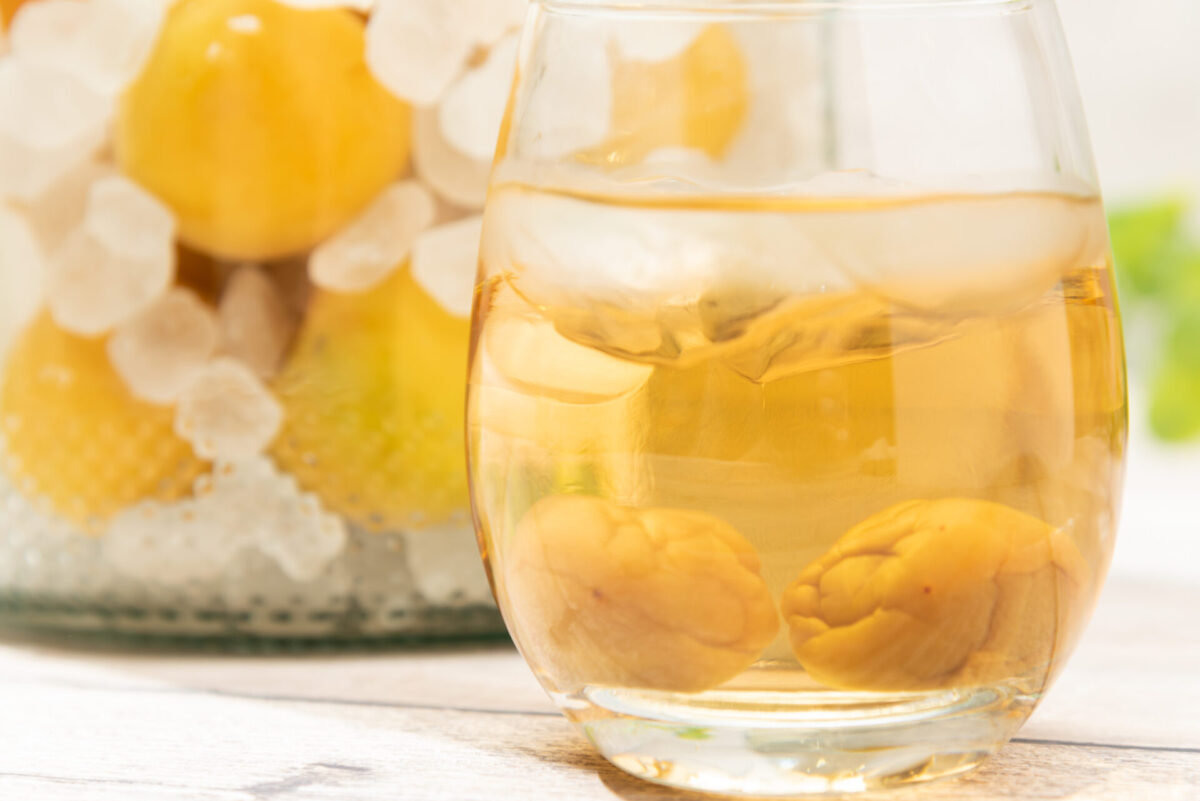
Here are some of the best plum wine brands for you to try in Japan!
CHOYA (チョーヤ)
Japan’s biggest and most famous plum wine company has its headquarters in Osaka. They produce a wide variety of umeshu and account for around 40% of the plum wine market in Japan. They only use 100% domestically grown plums and no artificial additives in their plum wine products. Their non-alcoholic plum wine is particularly popular amongst women.
SUNTORY (サントリー)
SUNTORY is a world-famous Japanese brewing company founded in 1899. They have a popular plum wine brand known as Plum Liqueur Casked Umeshu. The best way to enjoy the distinctive aroma is with soda and ice!
TAKARA SHUZO (宝酒造)
With its headquarters in Kyoto, TAKARA SHUZO is best known for producing a wide variety of alcoholic beverages and seasonings. Takara Plum Wine is their popular umeshu brand which exclusively uses top-quality plums grown in Kishu, one of the biggest plum-producing areas in Wakayama prefecture. The delicate taste is a perfect combination of sweetness and a slight sourness from the flavorful fresh plums.
If you always have the same drink at izakaya bars and want to try something new, plum wine could be the perfect option for your next order. You can also get affordable ones at convenience stores or supermarkets and enjoy them at home with your family or friends. As mentioned, plum wine is also easy to make at home, and it will stay good for a couple of years when it is stored correctly!
Food And Drink Tours
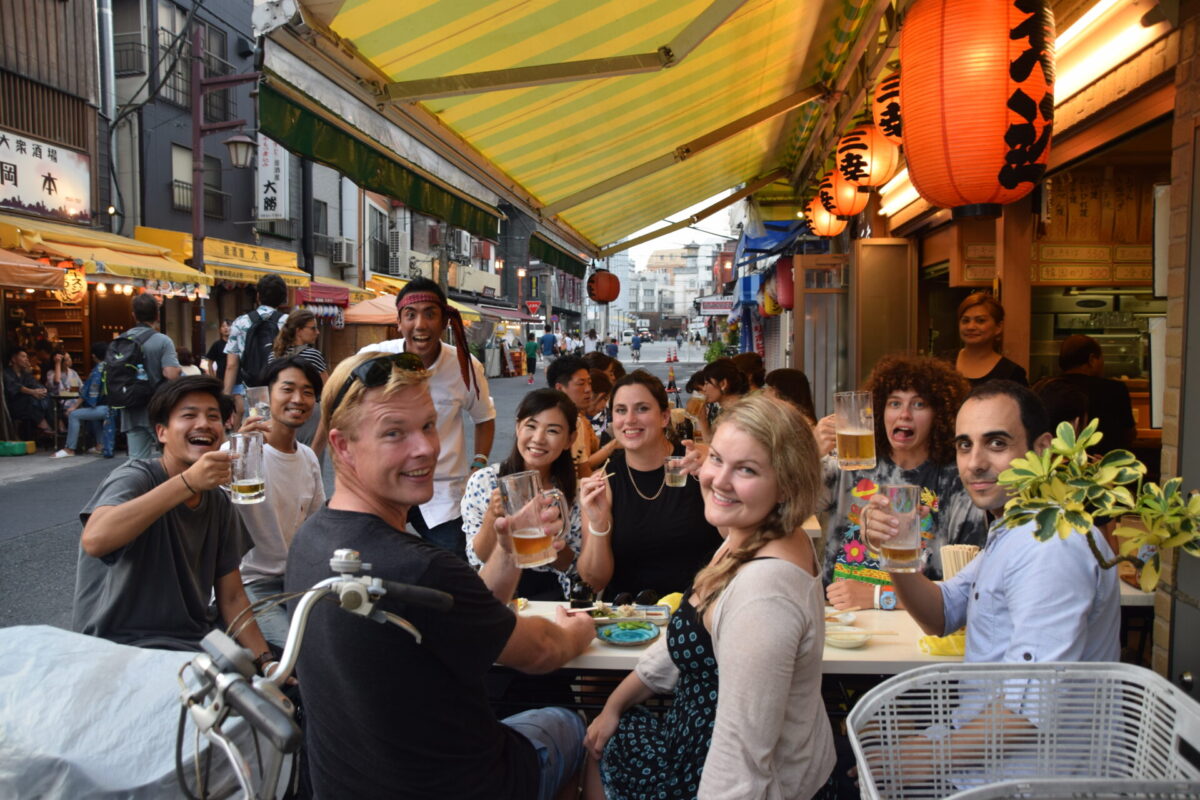
If you want to learn more about Japanese eating and drinking culture as well as the country’s fascinating history and sites, we highly recommend booking a tour with a knowledgeable English speaking local guide. It will be an unforgettable experience that you will remember for the rest fo your life!
Here are a few of our favorite Food/Drink tours:
1. Asakusa local food bar hopping tour [Evening Tour]
2. Shinjuku Biggest Drinking Town Izakaya Hopping Tour [Evening Tour]
Follow us on Instagram, Facebook, and Twitter for more travel inspiration. Or tag us to get featured!
Happy traveling!
Other articles you might be interested in

Miho Shimizu is a Japanese freelance writer settled in Shizuoka with her husband and two rabbits. Fascinated with traveling at the age of 18, she has spent most of her long holidays exploring incredible spots around Japan. She also loves to listen to music, draw, and read novels over a cup of green tea.
This post may contain some affiliate links. When you click through and make a purchase we may receive some commission, at no extra cost to you.
